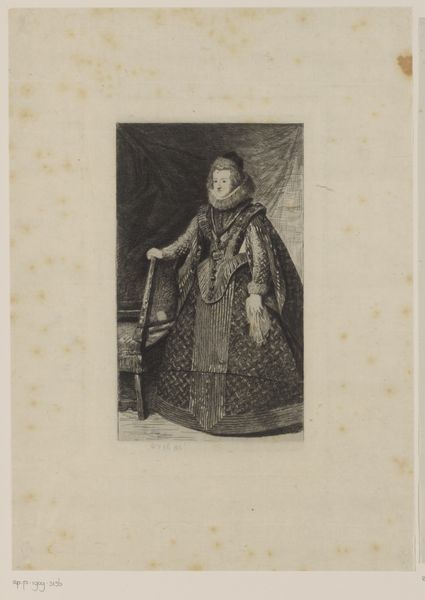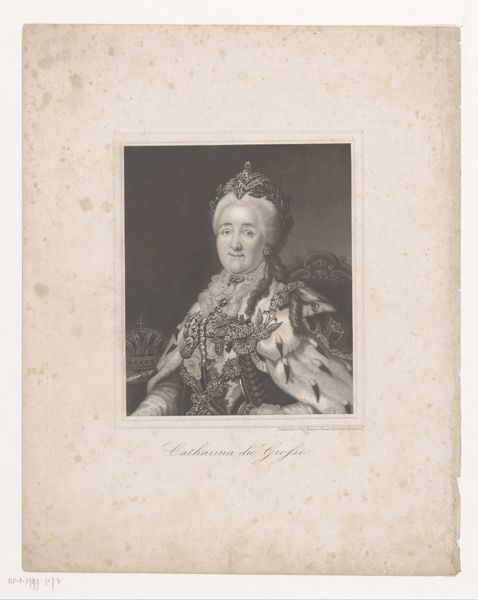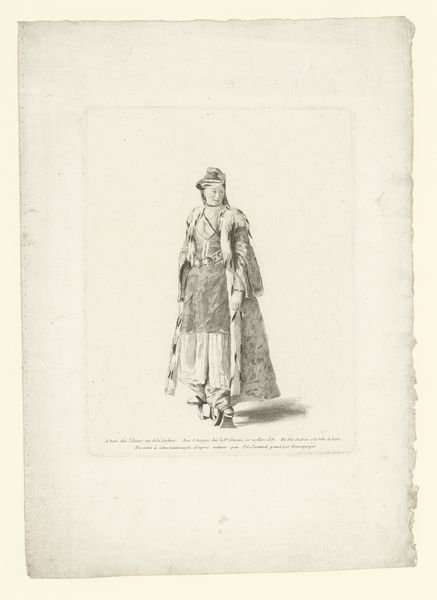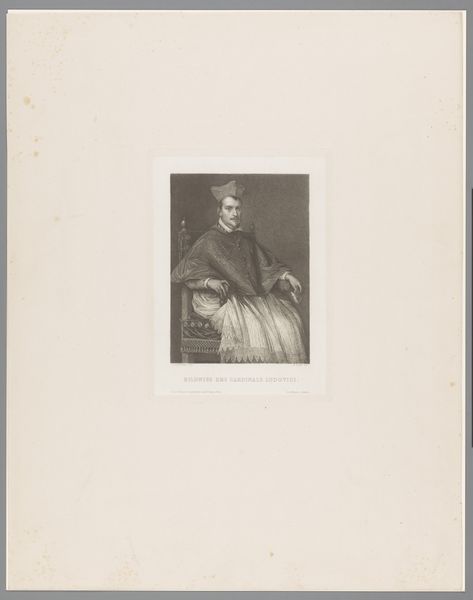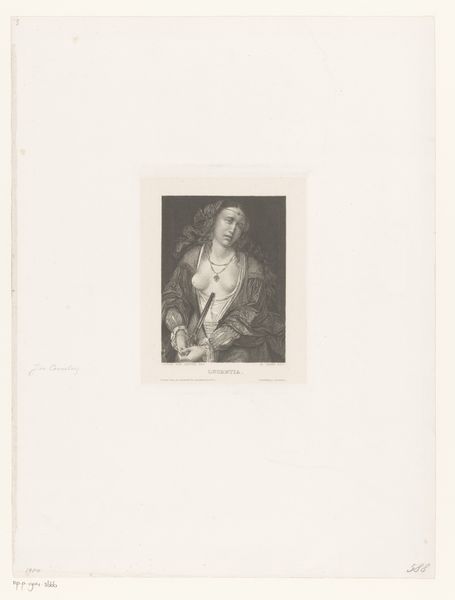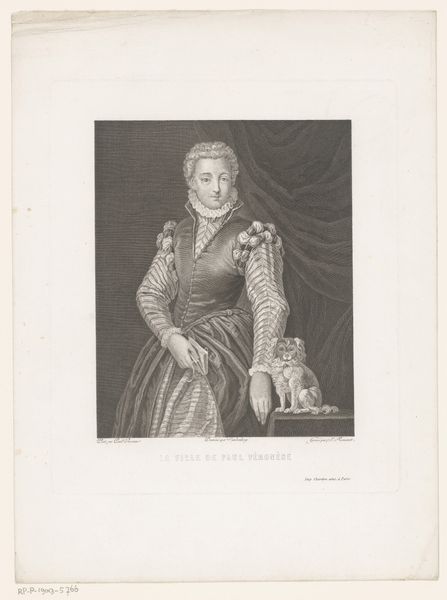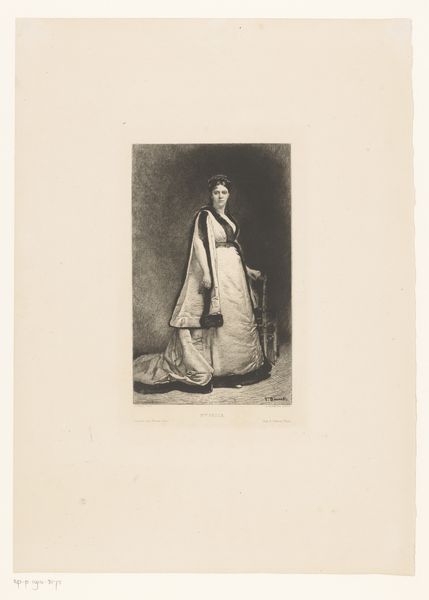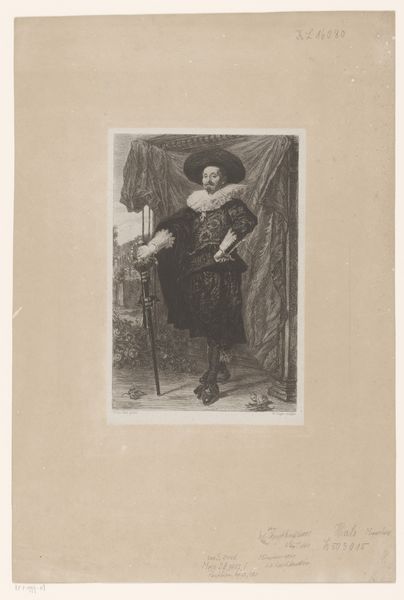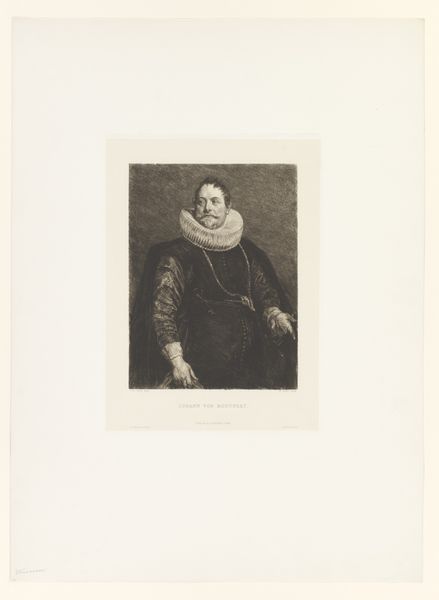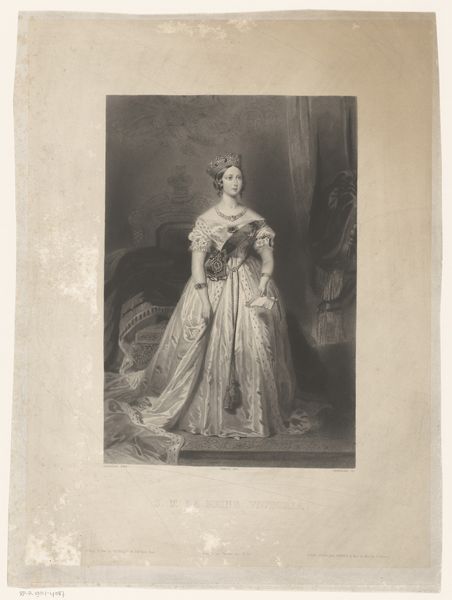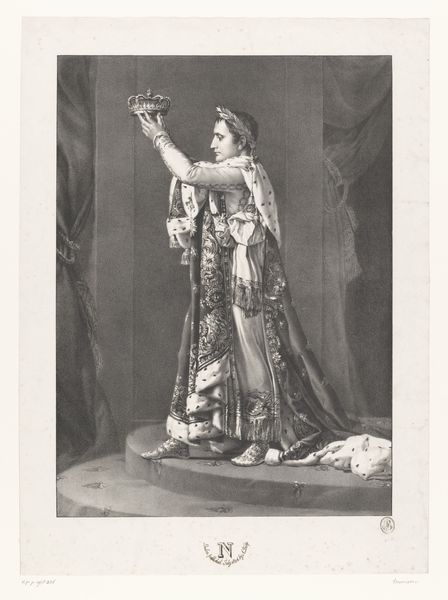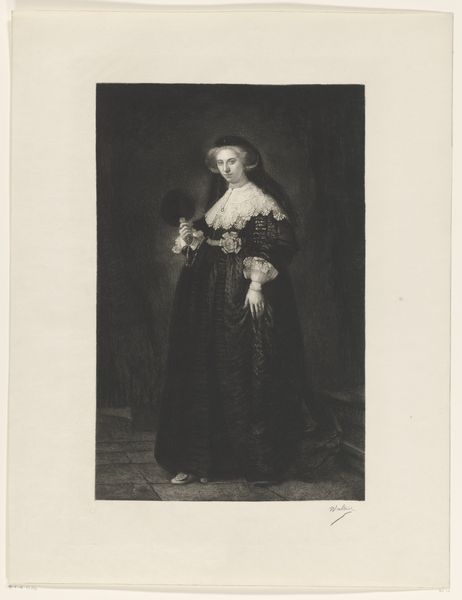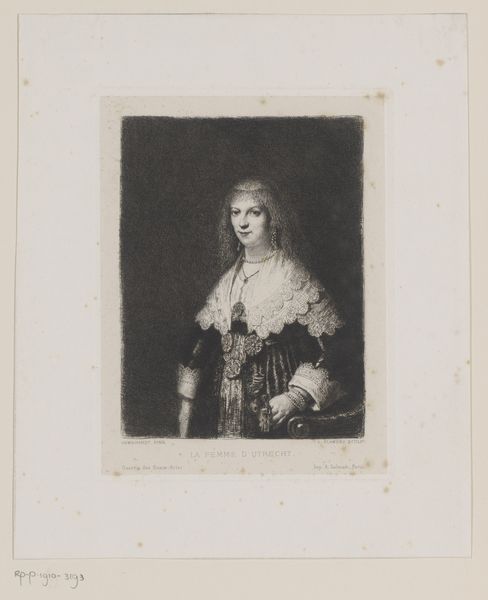
print, engraving
#
portrait
# print
#
old engraving style
#
history-painting
#
academic-art
#
engraving
#
realism
Dimensions: height 253 mm, width 157 mm
Copyright: Rijks Museum: Open Domain
Curator: This engraving, created in 1874 by Léopold Flameng, offers a glimpse into the past through a portrait of Elisabeth van Bourbon. Editor: My first impression is of quiet opulence. There's a stillness, but the details in her gown suggest incredible wealth and probably unbearable corsetry. Curator: Indeed. Flameng, a master of the engraver's art, captures both the grandeur and the constraints of royal life. Consider how the medium itself, the print, allows for wider circulation of her image, shaping public perception. Editor: It's fascinating how the starkness of the engraving emphasizes the textures of the fabric. The ruff around her neck looks both magnificent and strangely confining, like a gilded cage. What was the role of images like this back then? Curator: Prints like these democratized portraiture. While an original painting remained in the hands of the elite, engravings allowed a broader audience to access and consume images of power and status, reinforcing social hierarchies, but also offering a semblance of access. Editor: So, it's propaganda, in a way? Controlled messaging, perfectly coiffed and carefully disseminated? I wonder what her true personality was like, beyond the surface of royal obligation. I feel like, through the medium, some information is lost but some other gained. Curator: It's a valid observation. Flameng's work served to construct and reinforce a specific image, a visual representation of power for consumption. We cannot recover entirely the personality of the represented lady, but we gain insight into the social construction of her role. Editor: The beauty of art is how it reveals more than it intends. I find myself drawn to the subtle defiance I perceive in her eyes. Or maybe it's the long hours, forced in position, just to make an ideal portrayal? In any case, this "Portret van Elisabeth van Bourbon" speaks volumes beyond its lines. Curator: A fine way to summarize our conversation on an important historical piece of art. Thank you!
Comments
No comments
Be the first to comment and join the conversation on the ultimate creative platform.
